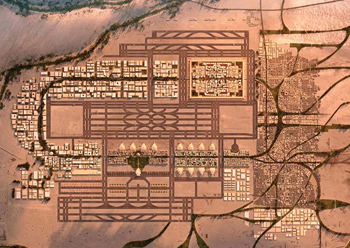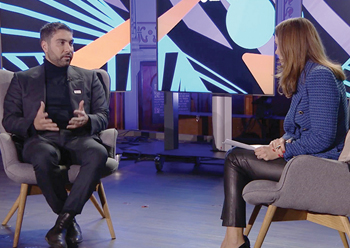
 King Salman International Airport will cover 57 sq km and host an array of facilities.
King Salman International Airport will cover 57 sq km and host an array of facilities.
Riyadh is embarking on plans to build one of the largest airports in the world as it looks to transform itself as a tourism hub, given the diversity of world-scale attractions being built, plans to double its population and position itself as a global logistics hub while stimulating transport and trade.
The proposed airport, King Salman International, will cover a massive 57 sq km and host an array of facilities, and aims to accommodate up to 120 million travellers by 2030 and 185 million travellers along with a capacity to process 3.5 million tons of cargo by 2050.
The masterplan for the mammoth airport was launched in November last year by His Royal Highness Crown Prince Mohammed bin Salman bin Abdulaziz, Prime Minister, Chairman of the Council of Economic and Development Affairs (CEDA) and Chairman of the Public Investment Fund (PIF), in line with Saudi Arabia’s vision to transform the capital and support the growth of Riyadh’s population from the current eight million to 15–20 million people by 2030.
 |
|
Foster + Partners is designing the masterplan for the airport. |
King Salman International Airport will have six parallel runways and include the existing terminals at Riyadh airport named after King Khalid. It will also include 12 sq km of airport support facilities, residential and recreational facilities, retail outlets, and other logistics real estate.
UK-based Foster + Partners has secured the contract to design the masterplan for King Salman International Airport.
According to Luke Fox, Head of Studio, Foster + Partners, the new King Salman International Airport reimagines the traditional terminal as a single concourse loop, served by multiple entrances. The terminal connects passengers to the sensory experiences of the city, with natural elements, tempered light and state-of-the-art facilities.
Serving as a bridge linking the East with the West, the airport is expected to become an aerotropolis centred around a seamless customer journey, world-class efficient operations, and innovation. Riyadh’s identity and the Saudi culture will be taken into consideration in the airport’s design to ensure a unique travel experience for visitors and transit travellers, according to Foster + Partners.
With sustainability at its core, the new airport will achieve LEED (Leadership in Energy and Environmental Design) Platinum certification by incorporating cutting-edge green initiatives into its design and will be powered by renewable energy.
The new airport is expected to contribute SR27 billion annually to non-oil GDP and to create 103,000 direct and indirect jobs, in line with Vision 2030 objectives.

















.jpg)













 (1).jpg)
















































